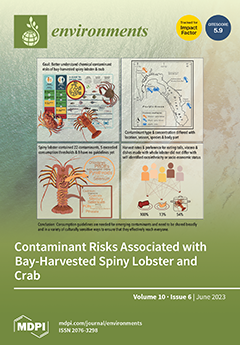This paper discusses how ecological restoration has been pursued through projects financed by
L’
Instrument Financier pour l’Environnement (
LIFE) of the European Commission in Mediterranean and Black Sea coastal lagoon sites affiliated with the Natura 2000 network. While the
LIFE
[...] Read more.
This paper discusses how ecological restoration has been pursued through projects financed by
L’
Instrument Financier pour l’Environnement (
LIFE) of the European Commission in Mediterranean and Black Sea coastal lagoon sites affiliated with the Natura 2000 network. While the
LIFE programme started in
1992, the first project focusing on ecological restoration in a coastal lagoon setting in this eco-region was attributed in 1995. In total, 50% (27) of the 54
LIFE projects in the Mediterranean and Black Sea coastal lagoons comprised a worksite on ecological restoration. Eighteen finalized projects, all realized after 2008, have been sufficiently documented for our analysis. The ecological restoration works included (i) removing solid waste and alien invasive species, (ii) re-building lagoons, (iii) creating islets for bird colonies, (iv) restoring the hydrodynamics of the lagoons, and (v) restoring and protecting vegetation. The latter includes submerged aquatic vegetation in the lagoons, halophytes on tidal flats and in fringing salt marshes, freshwater marsh plants, and dune vegetation. Abandoned salt works (Salinas), originally created within the coastal lagoons or on their shoreline, represent significant areas that can be managed for conservation or restoration. Coastal lagoons are transitional waters, and successful restoration of water quality and aquatic communities must include the concept of the aquatic continuum. Combating eutrophication requires managing the watersheds of the lagoons to drastically decrease nutrient loadings. Unfortunately, these issues have only been marginally addressed by the
LIFE projects, as they were too often limited by the perimeter of the Natura 2000 sites. In principle, the Water Framework Directive takes care of these issues and, according to an integrative vision, links them with the protected Natura 2000 sites. In practice, however, the
LIFE projects and the water policies in the member states still suffer from sectorial approaches.
Full article





